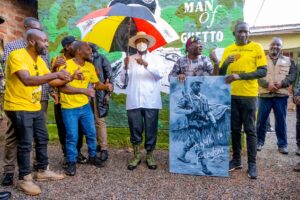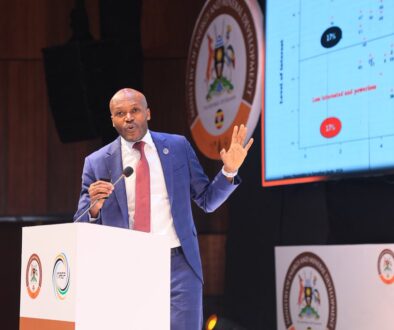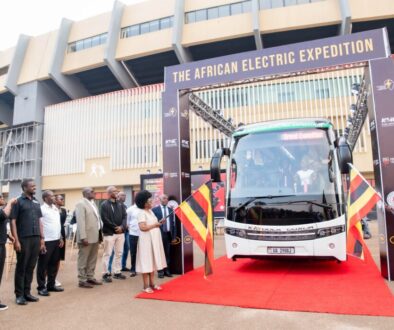Museveni gives billions to Kampala ghetto groups
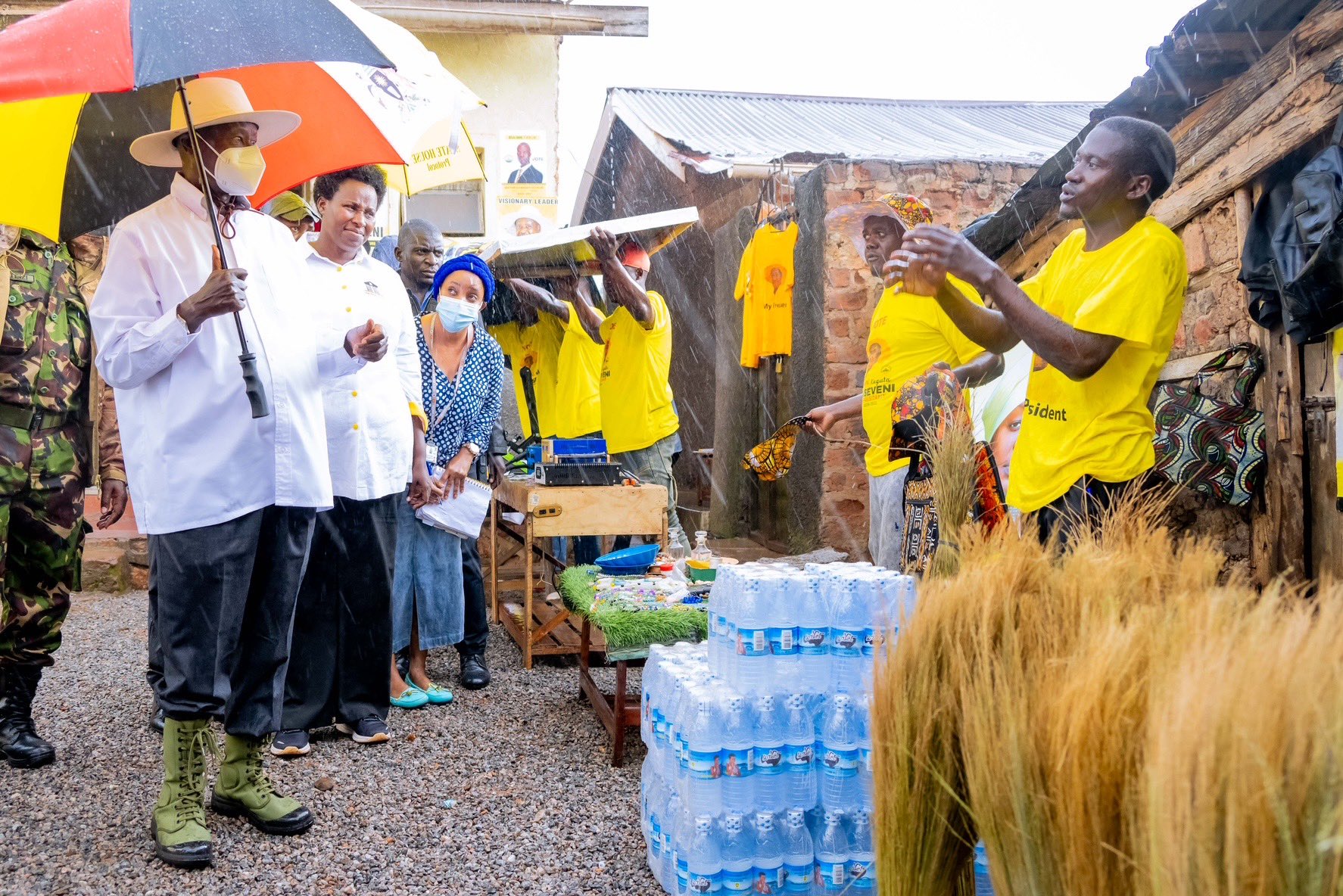
CAPTION: President Yoweri Kaguta Museveni, (L) inspects one of the gheto groups in Kampala Friday 18th 2025. (PPU Photo).
By Stephen Wandera Ouma
KAMPALA – President Yoweri Kaguta Museveni has pledged to increase government funding for ghetto-based wealth creation initiatives, by raising allocations from Shs100 million to Shs1 billion per structure in each division of Kampala annually, citing high population density and unmet needs within Uganda’s urban poor communities.
President Museveni made the remarks on Friday, July 18, 2025, during the resumption of his Parish Development Model (PDM) and wealth creation tour in Kampala, with a stopover in Bwaise II, Nabukalu Zone, Kawempe Division, one of Kampala’s most densely populated and economically marginalized areas.
“Now here in the ghetto, because of the high population numbers, we can go from Shs100 million to Shs1 billion per parish per year for the ghetto structures alone,” President Museveni said.
“In the 22 parishes of Kawempe Division, there’s already Shs2.2 billion of PDM each year, but the ghetto needs special attention.”
President Museveni explained that this funding increase is part of a broader government strategy to boost small-scale, self-sustaining income-generating activities among the urban poor, many of whom lack access to formal employment or business capital.
“Kampala will receive Shs5 billion for ghetto-specific programs across its five divisions,” he said, adding that this is over and above the existing PDM allocations.
Despite a torrential downpour that lasted nearly an hour, the President braved the weather and toured various micro-enterprises supported by previous rounds of ghetto funding. These included goat rearing, electrical repairs, tailoring and design, bakery, and printing services, among others.
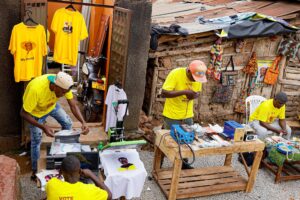
CAPTION: One of the gheto groups, President Yoweri Kaguta Museveni, inspects in Kampala on Friday, 18th 2025. (PPU Photo).
The President, who was accompanied by key mobilizers and local government officials, emphasized the need for what he called “pro-poor budgeting,” warning that much of the national budget is being lost to administrative costs and unproductive expenditures.
“Some of the expenditure is not productive, money spent on salaries for district officials, new districts, and unnecessary administrative units. This money should be going to the poor, to PDM, and ghetto empowerment,” H.E. Museveni added, calling on ghetto leaders and youth to become active participants in national decision-making, not just beneficiaries of it.
“Support me politically so I’m not just left in the hands of technocrats and parliamentarians. If we unite and you support these programs, we can transform Uganda from the bottom up,” he stated.
He cited recent efforts in Ntungamo, where there was pressure to create new districts, despite stagnant population levels.
“Recently, I had a big effort in Ntungamo; people wanted to create more districts: Ruhama, Kajara, and Rushenyi. Yes, the district is big, but the population has not increased. So this area, which is small and compact, why do you want to have more managers, and why do you want to spend money on that instead of prioritizing education for the children of the poor?” he wondered.
“Instead of spending money on new MPs and district officials, we should invest in education, roads, drainage, and the ghetto economy,” the President added, while urging residents to monitor government funds meant for them, including the Shs10 billion allocated to Kawempe under the PDM over the last four years, as well as money from Emyooga, the Youth Livelihood Fund, and the Women Entrepreneurship Fund.
CAPTION: Some of the gheto groups, President Yoweri Kaguta Museveni, inspects in Kampala on Friday, 18th 2025. (PPU Photo).
“Follow the money and ensure it is not eaten. You received Shs500,000 and managed to start something. That shows the potential when funds reach the right people,” he said.
In a deeply personal reflection, President Museveni recounted his first visit to the ghetto in 1968, when he was a university student active in underground political movements.
“I went to Katwe and connected with Abas Kibazo and others. That’s when I began understanding the plight of the abawejjere—urban poor who had been forgotten after independence,” the President said.
He detailed how the Katwe group later contributed to the anti-Amin liberation effort in the 1970s, with some of its members joining him on missions to Mbarara, Dar es Salaam, and later Mozambique for military training.
“When Amin took power on 25 January 1971, we met that afternoon, and we decided to fight him. He had no chance because he didn’t understand anything,” H.E. Museveni said, adding that people like Ahmed Ssegguya, recruited from Katwe, became part of the force.
The President later handed over the ghetto groups to be managed by Hon. Amama Mbabazi in 1974, but many leaders didn’t know how to work with the uneducated, yet these people had skills in mechanics, carpentry, and printing.
Mr. Sadam Kiggundu, known in the ghetto as Amigo, thanked the President for the Shs140 million his structure had earlier received. He appealed for special skill centres in the ghetto to teach vocational skills like tailoring, welding, and carpentry, especially now that the number of vulnerable children in Kawempe has grown from 700 in 2022 to over 4,000 in 2024.
Mr. Sserunkuuma Nesta Sabiiti, aka Peace-Keeper, said President Museveni’s direct engagement with ghetto youth had transformed their perception and economic opportunities.
“It’s good that you’ve come in the rain; now you have seen how we live when it floods. We appreciate you and promise full support in the 2026 presidential election,” he said, further appealing for a boxing gym, better public toilets, and improved drainage systems, calling them urgent health and safety priorities for the community.
Other ghetto residents also shared stories of success from the initial rounds of funding.
Ms. Opicia Dorothy from Nabukalu Zone said she used Shs500,000 to start a broom business and has since managed to educate all her seven children. A sack of soft broom seeds sells for Shs80,000, while finished brooms go for between Shs1,000 and 3,000 each.
CAPTION: President Yoweri Kaguta Museveni, (C) inspects one of the gheto groups in Kampala Friday 18th 2025. (PPU Photo).
Mr. Mubiru Wilberforce and Oscar Ssematimba also shared their success in goat farming. Starting with two goats in October 2024, they now own 25 goats, showing how small investments can grow into sustainable businesses.
On the issue of education, President Museveni revisited his earlier educational reforms, such as the Universal Primary Education (UPE) initiative introduced in 1996, saying it has been undermined by corruption and poor oversight.
“Headmasters connive with PTAs to charge illegal fees. LC5 chairmen and MPs don’t follow up. The poor suffer, and children drop out,” he said, blaming this partly on misguided political priorities.
The President highlighted the State House skilling hubs as a successful initiative that provides a six-month vocational training to youth who never completed school.
“We’ve shown that you can turn someone with nothing into someone productive. Everyone now wants skilling hubs,” he said.
The President later concluded his tour with a public rally at Kawempe Mbogo Mosque Playground.

